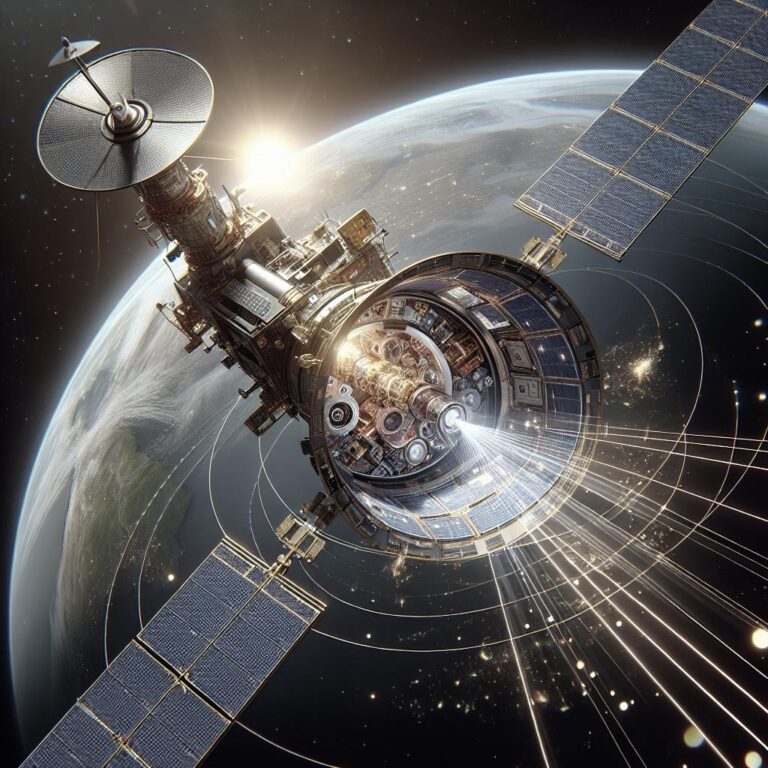“`html
How to Speed Up My Computer
Is your computer slowing down and causing frustration? You’re not alone. Fortunately, you can take several actionable steps to improve your computer’s speed and performance significantly. In this comprehensive guide, we will explore effective methods, including uninstalling unnecessary software, limiting startup processes, and upgrading hardware like RAM and SSD drives. We’ll also delve into software-based fixes such as running troubleshooters, optimizing system settings, and ensuring your machine stays virus-free. Whether you’re a gamer needing that extra edge or someone looking for a smoother everyday experience, these tips are tailored to bring your PC back to its optimal performance.
1. Uninstall Crapware
Crapware, or bloatware, refers to pre-installed software that manufacturers load onto new PCs. These applications are often unnecessary and can significantly slow down your computer. Start by reviewing the list of installed programs on your system. Identify applications you rarely or never use and uninstall them.
To remove unwanted software, navigate to the Control Panel, and select “Uninstall a program.” From there, you can evaluate each program’s necessity. Be cautious not to remove essential software or system drivers. Uninstalling crapware can free up disk space and reduce the burden on your system, resulting in noticeable performance improvements.
2. Limit Startup Processes
Many applications set themselves to start automatically when you boot your computer, which can considerably slow down the startup time. To speed things up, you need to review and manage these startup processes. Open the Task Manager by pressing Ctrl + Shift + Esc, and navigate to the “Startup” tab.
Here, you’ll find a list of programs that launch on startup, along with their impact on system performance. Disable non-essential programs by right-clicking and selecting “Disable.” Limiting the number of startup processes can drastically reduce boot time and free up system resources for more critical tasks.
3. Clean Up Your Disk
Over time, your computer accumulates temporary files, system caches, and other data that can slow down performance. Regular disk cleanups help maintain optimal system efficiency. Windows has a built-in Disk Cleanup utility that assists in removing unnecessary files.
To run Disk Cleanup, type “Disk Cleanup” in the Windows search bar and select the tool. Choose the drive you want to clean and the file types you want to remove. Make it a habit to perform a disk cleanup periodically to ensure your computer runs smoothly.
4. Add More RAM
RAM (Random Access Memory) plays a vital role in your computer’s performance. More RAM allows your computer to handle more tasks simultaneously, reducing lag and increasing speed. If you frequently run memory-intensive applications, consider upgrading your RAM.
Check your system’s current RAM usage in the Task Manager under the “Performance” tab. If it’s often hitting high usage, consult your computer’s specifications to determine compatible RAM options and consider upgrading. Installing additional RAM is usually straightforward and offers one of the most substantial performance boosts for the investment.
5. Install an SSD Startup Drive
Traditional hard drives can be a bottleneck to performance due to their mechanical nature. Replacing your primary drive with a Solid State Drive (SSD) can drastically improve boot time and overall system responsiveness. SSDs offer faster read/write speeds and enhanced reliability.
Installing an SSD involves backing up your data, purchasing a compatible drive, and migrating your system. Many solutions are available for cloning your current hard drive to an SSD. Once installed, you’ll enjoy a significant increase in speed and efficiency, particularly in loading applications and files.
6. Check for Viruses and Spyware
Malicious software can severely hamper performance while compromising security. Regular scans with a reputable antivirus or anti-malware program can keep your system clean. Windows Defender offers built-in protection, but third-party solutions can provide additional features and frequent updates.
Schedule routine scans and keep your antivirus software updated. If your computer has been infected, not only will performance be impacted, but your data could be at risk. Consistent electronic hygiene ensures long-term speed and security.
7. Change Power Mode to Best Performance
Windows offers power modes that balance performance and energy consumption. Switching your power plan to “Best Performance” allows your computer to prioritize speed over energy savings, which is especially useful for desktops or when the battery is not a concern.
Access power settings via Control Panel > System and Security > Power Options. From there, choose or customize a plan that prioritizes performance to give your computer the boost it needs when maximum output is essential.
8. Run Troubleshooters
Windows comes equipped with built-in troubleshooters that automatically diagnose and fix common issues affecting performance. These tools can resolve problems related to hardware, network connections, or software glitches.
To run a troubleshooter, go to Settings > Update & Security > Troubleshoot. Choose the area you suspect is causing problems and follow the on-screen instructions. Troubleshooters are a simple solution that can significantly restore lost performance.
Recommended by Our Editors
For a deeper dive into performance enhancements, our editors suggest exploring advanced utilities and system optimizations. Tools like CCleaner for comprehensive disk cleaning or updating drivers through reliable third-party software can offer additional benefits to your computer’s speed.
9. Change Appearance in Performance Options
Windows appearance settings, such as visual effects and animations, can impact system performance. Adjusting these settings can free up resources and improve speed. Access the “Performance Options” menu by typing “Adjust the appearance and performance of Windows” in the search bar.
In the “Visual Effects” tab, select “Adjust for best performance” to disable most eye-candy effects, or manually choose which effects to keep. This tweak can make a noticeable difference in speeding up older or less powerful machines.
10. Turn Off Search Indexing
While the Windows Search Indexer helps speed up file searches, it can slow down overall performance on some systems. If your computer is struggling, consider disabling this feature.
To do so, type “Indexing Options” in the search bar and modify settings to limit or completely disable indexing. You can always re-enable it later if needed. Disabling indexing will optimize resources, particularly beneficial when other solutions haven’t resolved slowdown issues.
11. Turn Off Tips and Notifications
Windows 10 and 11 come with built-in tips and notifications that might add to the distractions and slow down your computer. While these notifications can be helpful, they can also consume resources.
Turn off these notifications by heading to Settings > System > Notifications & Actions. Disable “Get tips, tricks, and suggestions as you use Windows” to free up system resources and reduce interruptions.
12. For Gamers: Use Game Mode and More
For those looking to enhance gaming performance, Windows Game Mode is designed to optimize your system for a smoother gaming experience. Enabling Game Mode prioritizes gaming processes, helping reduce background activity interference.
To activate Game Mode, go to Settings > Gaming > Game Mode and toggle the switch to “On.” Additionally, keeping your graphics card drivers updated and using performance-enhancing software tailored for gaming can further improve in-game performance.
Our Top-Rated Windows PCs
Investing in a high-performance PC can make a world of difference in your daily productivity. Check out our list of top-rated Windows PCs that excel in speed, design, and reliability. Finding the right balance of components can ensure your next machine handles all your needs seamlessly.
Like What You’re Reading?
If you’ve found these tips helpful, subscribe to our newsletter for the latest insights and articles on technology and innovation. Stay ahead of the curve with regular updates and expert advice sent straight to your inbox.
About Michael Muchmore
Michael Muchmore is a senior analyst for PC performance and benchmarks. His extensive knowledge and industry insight provide readers with in-depth analyses and practical guidance. Michael’s work empowers users to elevate their computing experience, ensuring optimal performance is within everyone’s reach.
Next Steps
| Step | Action | Benefit |
|---|---|---|
| 1 | Uninstall Crapware | Frees up space and improves speed |
| 2 | Limit Startup Processes | Faster boot times |
| 3 | Clean Up Your Disk | Optimized system efficiency |
| 4 | Add More RAM | Enhanced multitasking capability |
| 5 | Install an SSD Startup Drive | Significant speed improvement |
| 6 | Check for Viruses and Spyware | Improved speed and security |
| 7 | Change Power Mode to Best Performance | Prioritized speed over power saving |
| 8 | Run Troubleshooters | Automatic issue resolution |
| 9 | Change Appearance in Performance Options | Freed resources and increased speed |
| 10 | Turn Off Search Indexing | Optimized system resource usage |
| 11 | Turn Off Tips and Notifications | Reduced distractions and resource use |
| 12 | For Gamers: Use Game Mode and More | Smoother gaming experience |
“`





